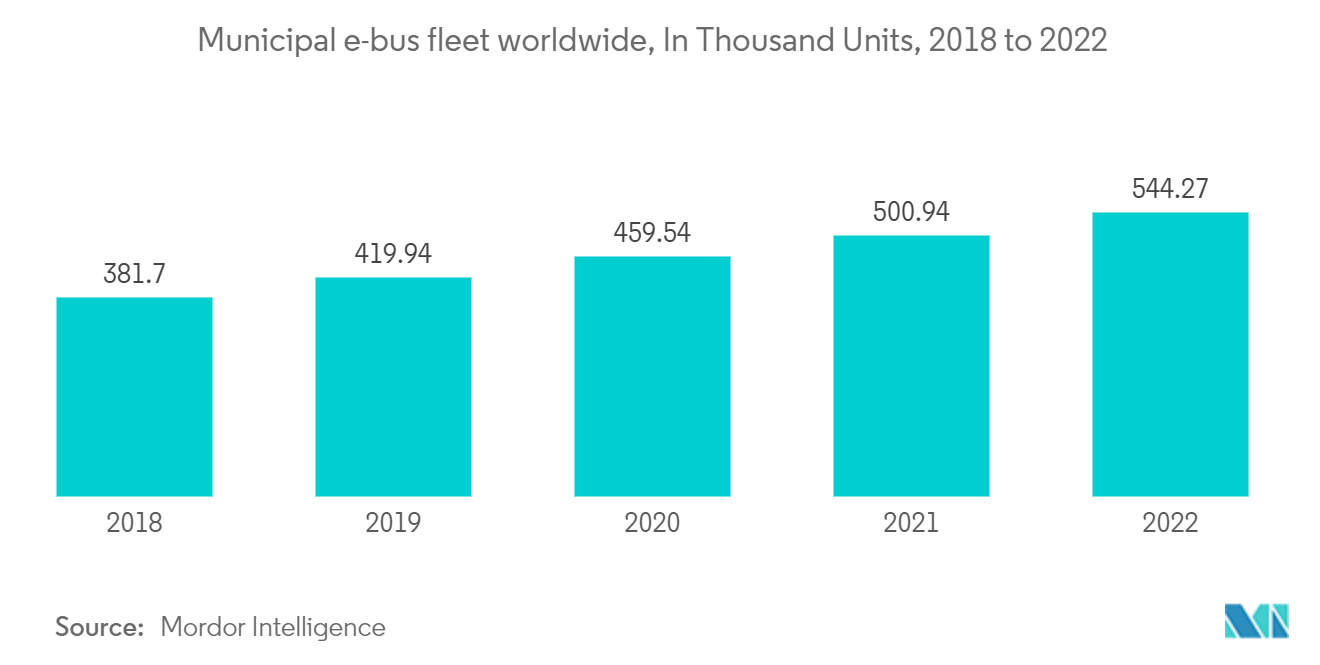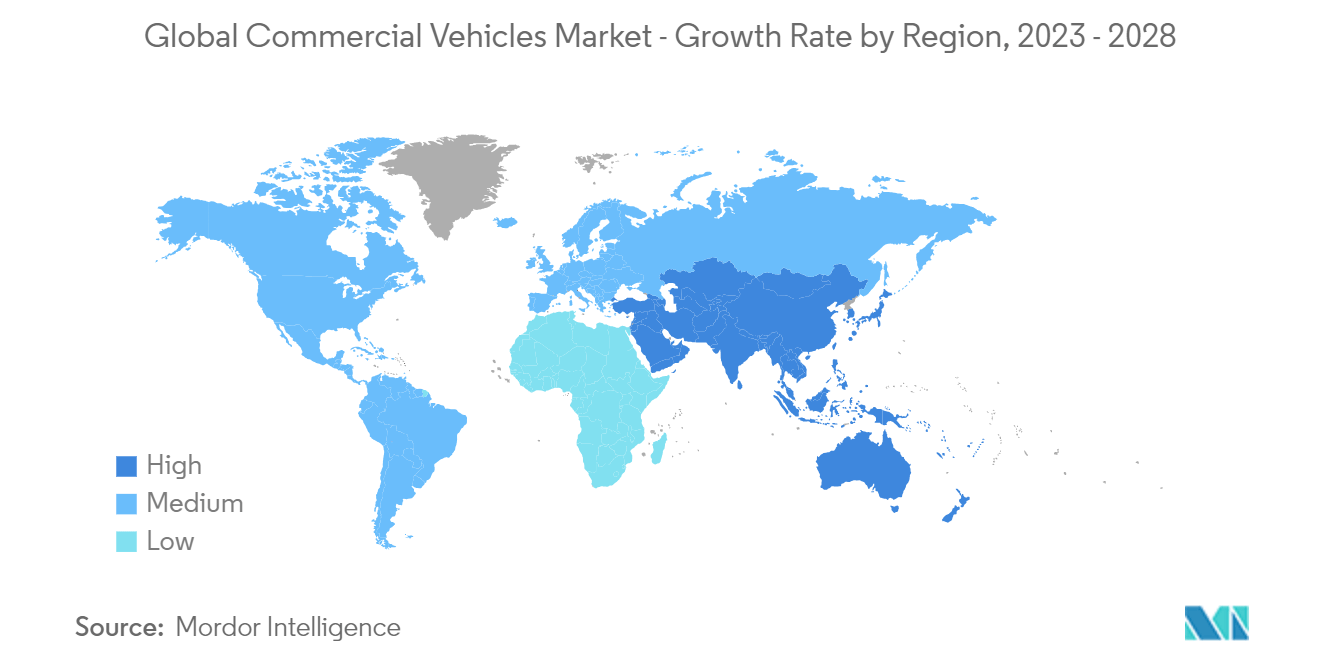Market Trends of commercial vehicles Industry
Increasing adoption of electric Commercial Vehicles for mass transit
- Fuel constitutes a major part of the operating cost of any vehicle. With the increasing costs of fuel, using an electric bus for public transport reduces not only the fuel cost but also other upfront costs and the total cost of ownership. By 2030, the prices for electric buses are expected to come down to that of diesel fuel buses. Electric buses help reduce 81-83% of the maintenance and operating costs compared to a diesel-engine bus.
- The rise in general awareness about air pollution, climate change, and, most importantly, the increasing diesel prices over the years are some of the reasons that incentivize most state and city transport authorities to increasingly accommodate clean public transport solutions in their regional development plans. Electric buses offer more comfort to travelers compared to gasoline or diesel buses. The NVH levels in electric buses are minimal, unlike traditional diesel buses, providing enhanced comfort to passengers.
- The e-bus market has the potential to fill the voids that exist in the public transport system. By reducing expenses related to operation and maintenance and also cutting down hidden costs linked to public health and the environment, mass electrification of public buses would not only let the concerned stakeholders reap huge benefits but also help strike a balance of providing returns between the service providers and the service users over the long run.
- With strong government thrust for EV transition, the public transport authorities and the e-bus suppliers are encouraged to drive the market growth on the back of proper regulatory framework and the market mechanism.
- Moreover, the upfront costs of electric buses are more than the diesel counterparts across all length-based categories. However, a comparison of the Total Cost of Ownership (TCO) between diesel and electric buses reveals that electric buses make more economic sense. Several private and public bus operators have started the adoption of electric buses for mass transit across the world, which is driving the demand for electric buses.
- Although the United States has fewer electric buses in the country, in the past few years, there has been an increase in cities and universities acquiring fleets of electric buses. With California being the most dynamic state on adoption, it adopted a new rule that can be followed by many other states-the Innovative Clean Transit Rule (ICTR). From 2023, 25% of new buses purchased must be zero emission. In 2029, 100% of orders from California transport agencies. California's goal is to convert its 12,000 city buses to 100% electric by 2040.
- The demand for electric vehicles increased due to the increasing freight, logistics, and construction activities across the country. Other factors, such as stringent emissions regulations, electrification, alternative fuels, driver shortage, autonomous vehicles, and last-mile delivery, are expected to fuel the growth of electric trucks over the forecast period.
- Several commercial vehicle manufacturers are introducing new electric commercial vehicles in India, which in turn is likely to witness major growth for the market during the forecast period. For instance, in October 2022, PMI Electro Mobility, a leading manufacturer of electric buses in India, announced the launch of a range of small electric commercial vehicles to cater to the growing demand from e-commerce industries for last-mile delivery vehicles.
- Considering these strong developments and ongoing initiatives by automakers and the government, demand for electric commercial vehicles in India is expected to portray a strong growth rate during the forecast period.

Asia-Pacific is dominating the Market
- Asia-Pacific is witnessing rapid urbanization, which in turn is expected to be a factor in the increase in the demand for light, medium, and heavy commercial vehicles in the region. The rapid expansion of e-commerce and logistics industries across the country is likely to increase the demand for commercial vehicles during the forecast period.
- Several E-commerce companies and commercial vehicle manufacturers across the country are partnering to transport goods, which in turn is anticipated to boost the market during the forecast period.
- For instance, in May 2022, Tata Motors Limited launched the all-new Ace EV, the electric version of the ever-popular ACE. The company partnered with an e-commerce company and logistics service providers such as Amazon, BigBasket, City Link, DOT, Flipkart, LetsTransport, MoEVing, and Yelo EV. Through this partnership, the company will deliver 39,000 units of new ACE electric vehicles (EVs) to e-commerce and logistics service providers in India.
- In February 2021, e-commerce giant Amazon announced a partnership with Mahindra Electric to deploy electric vehicles into its delivery network. Amazon aims to reach 10,000 EVs in fleet size by 2025. Flipkart, in the same period, partnered with Hero Electric and Piaggio to achieve a 100% electric delivery fleet by 2030. These partnerships aim to improve the charging infrastructure and include more electric vehicles in the commercial vehicles sector in India.
- Governments of several countries are investing in new construction and development activities. China's One Belt, One Road initiative may aid in infrastructural development, such as railways, buildings, and energy projects, stretching from China's western regions. This creates a huge opportunity for construction material and equipment movement across the country. Japan's Linear Motor Car Project is a maglev bullet train proposed to cover 285.6 kilometers in 67 minutes and is being built at a rapid pace with an expected opening in 2027.
- According to the data of the Federation of Automobile Dealers Associations (FADA), in March 2021, the sales of commercial vehicles were down by 42.2%, to 67,372 units, against 116,559 units in March 2020.
- Moreover, major players in the country are introducing new truck ranges in the domestic market. For instance, in March 2021, Tata Motors unveiled its light commercial trucks (I&LCV) Ultra Sleek T-Series. All trucks are powered by the future-ready BS-VI 4SPCR engine, with a 100hp power and a torque rating of 300nm.
- The growing government regulations improving electric vehicle adoption and robust expansion adopted by OEMs and suppliers in the region to accommodate rising demand from the automotive industry in China are expected to create a positive outlook for market growth during the forecast period. For instance,
- The government of China is encouraging people to adopt electric vehicles. The country has already made plans to phase out diesel fuel, which runs the current generation of tractors and construction equipment. The country is planning to completely ban diesel and petrol vehicles by 2040.
- The above-mentioned development across the region is likely to enhance the demand for commercial vehicles during the forecast period.

